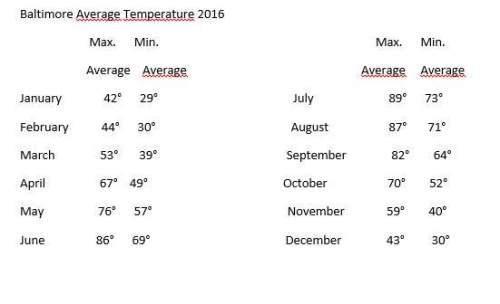
Mathematics, 02.05.2021 02:30 lin550
To study the relationship between the Ozone level and the upper air temperature in Denver, CO from 2000 to 2015 with each year from June 1 to Sept. 30, Tom collected data and performed simple linear regression analysis. He downloaded the maximum daily 8-hour average (MDA8) Ozone (O3) level in parts per million (ppm) from the US Environmental Protection Agency (EPA), and the daily air temperature in Kelvin (K) from National Oceanic and Atmospheric Administration (NOAA) Tom performed a simple linear regression using the above data and got the following output. "Temp.700mb" is the temperature in Kelvin
Simple linear regression results:
Dependent Variable:
Ozone Independent Variable: Temp.700mb Ozone -389.37974 +1.5654283 Temp.700mb
Sample size: 1949 R (correlation coefficient)0.52070036 R-sq 0.27112887 Estimate of error standard deviation: 9.9115558 Parameter estimates: Parameter Estimate Std.
Err. AlternativeDF T-Stat P-value Intercept 389.3797416.57388 Slope t0 1947-23.493578 <0.0001 1.5654283 0.058168478 01947 26.911969 <0.0001
Which of the following are correct conclusions or interpretations? Hint: Recall that 0 degrees Kelvin is absolute zero (-459.67 degrees Fahrenheit). Also recall that ozone is measured in parts per million and therefore must be a positive number Select one or more
a. The intercept is negative, so therefore the regression analysis is wrong
b. We would predict that at 0 degrees Kelvin the ozone will be about -389.38 ppm on average
c. Zero degrees Kelvin is outside the range of temperatures found on Earth. Therefore, we should not try to interpret the intercept estimate seriously
d. Although the intercept is negative, we can still use the regression analysis for predictions for ozone levels for typical temperatures in Denver, CO

Answers: 1


Other questions on the subject: Mathematics

Mathematics, 21.06.2019 20:30, catcatscats122
Write two point-slope equations for the line passing through the points (6, 5) and (3, 1)
Answers: 1


Mathematics, 22.06.2019 00:00, hotonkylie147
Which of the following will form the composite function?
Answers: 3

Mathematics, 22.06.2019 00:00, Averybeam300
If two parallel lines are cut by a transversal, interior angles on the same side of the transversal are supplementary. a. always b. sometimes c. never
Answers: 2
You know the right answer?
To study the relationship between the Ozone level and the upper air temperature in Denver, CO from 2...
Questions in other subjects:

Mathematics, 11.01.2021 22:20

History, 11.01.2021 22:20

History, 11.01.2021 22:20

Biology, 11.01.2021 22:20


Geography, 11.01.2021 22:20

English, 11.01.2021 22:20


Mathematics, 11.01.2021 22:20




